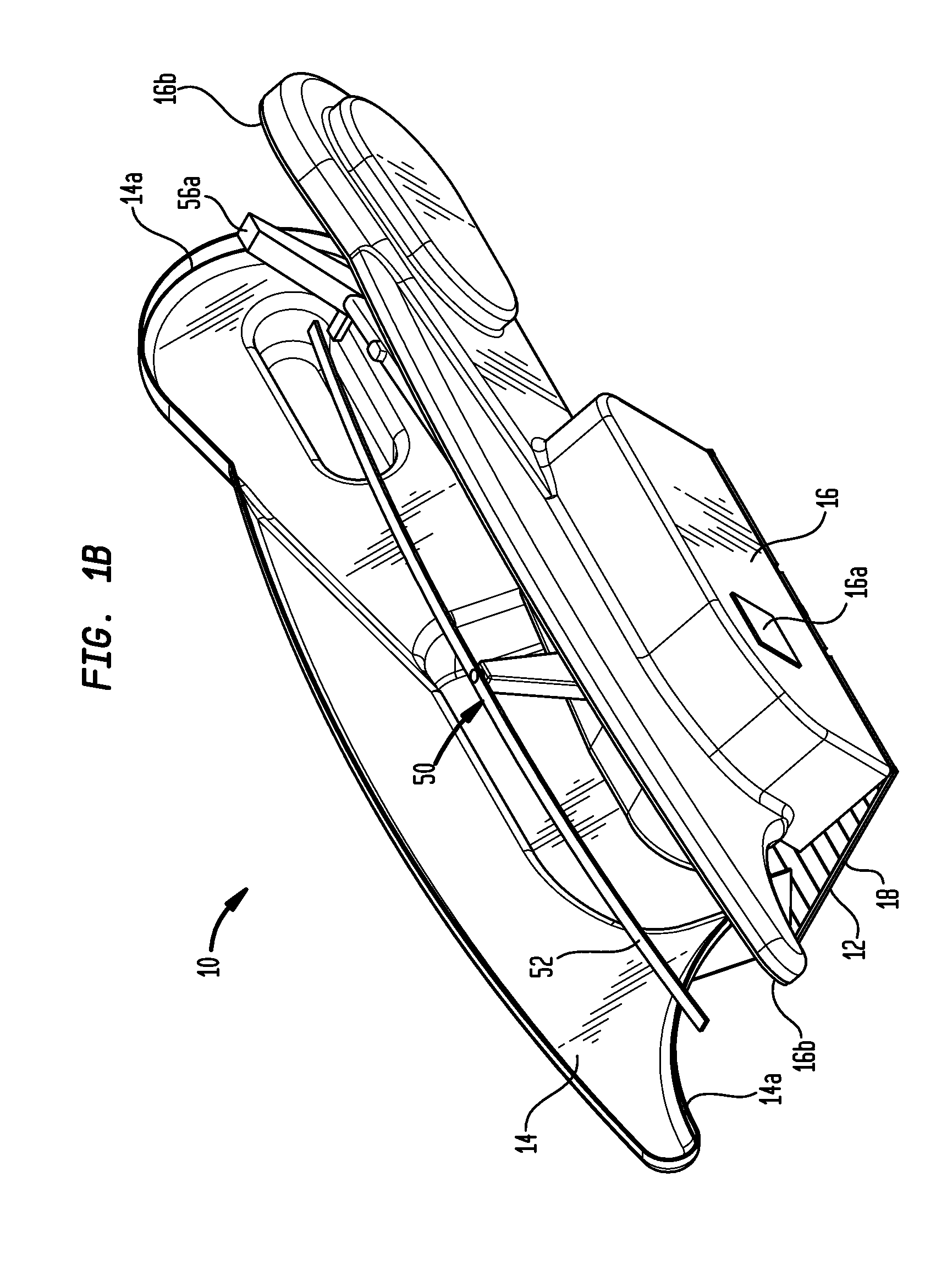Combined helicopter landing pad and clamshell enclosure
a helicopter and enclosure technology, applied in the field of combined helicopter landing pads and clamshell enclosure inventions, can solve the problems of large aircraft areas exposed to the elements, tampering, wildlife,
- Summary
- Abstract
- Description
- Claims
- Application Information
AI Technical Summary
Benefits of technology
Problems solved by technology
Method used
Image
Examples
embodiment 100
[0064]An alternative embodiment of the invention 100 having an electric drive system is shown in FIGS. 7A-7C. Embodiment 100 includes clamshell sections 14 and 16 and a base 102. Links 104a and 104b connect clamshell section 14 to front lead screw 106 and rear lead screw 128, respectively. Similarly, links 104c and 104d connect clamshell section 16 to front lead screw 106 and rear lead screw 128, respectively. As shown in FIG. 7C, front link 104a is attached by a pivotable member to clamshell section 14 at one end and to a pivotable member 124 attached to a traveling nut 122 at the other. The remaining links 104b, 104c and 104d are attached to the clamshell sections and traveling nuts in a similar manner. Nut 122 engages the threads 108 on the front lead screw 106. As shown in FIG. 7B, the front lead screw has threads 108 at one end and threads 110 at the other. The threads 108 and 110 are formed in the opposite sense or directions so that rotation of the lead screw 106 causes the t...
embodiment 200
[0067]Details of the expandable embodiment 200 are better understood by referring to FIG. 8B. A lead screw 208 is drivable by a wench type electric motor 210. Motor 210 includes a drive gear attached to a drive chain 212 which in turn drives a gear attached to lead screw 208. Another chain 214 which engages a gear on lead screw 208 drives the rear lead screw which operates in a similar manner. Drive motors 216 and 218 drive hollow drive rods or sleeves 220 and 222 respectively. Hollow drive sleeve 220 and 222 receive lead screw 208 so that as the landing pad 12 expands and contracts as the lead screw moves in and out of the hollow cavity in drive sleeves 220 and 222. Hollow sleeves 220 and 222 have threads on the exterior to receive traveling nuts similar to nut 122 shown in FIG. 7C. Also attached to sleeve 220 is a gear and drive chain 224 to provide power to the rear link 104b. Similarly, a chain 224 picks power off of sleeve 222 to drive rear link 104d.
[0068]In operation, if the...
PUM
 Login to View More
Login to View More Abstract
Description
Claims
Application Information
 Login to View More
Login to View More - R&D
- Intellectual Property
- Life Sciences
- Materials
- Tech Scout
- Unparalleled Data Quality
- Higher Quality Content
- 60% Fewer Hallucinations
Browse by: Latest US Patents, China's latest patents, Technical Efficacy Thesaurus, Application Domain, Technology Topic, Popular Technical Reports.
© 2025 PatSnap. All rights reserved.Legal|Privacy policy|Modern Slavery Act Transparency Statement|Sitemap|About US| Contact US: help@patsnap.com



